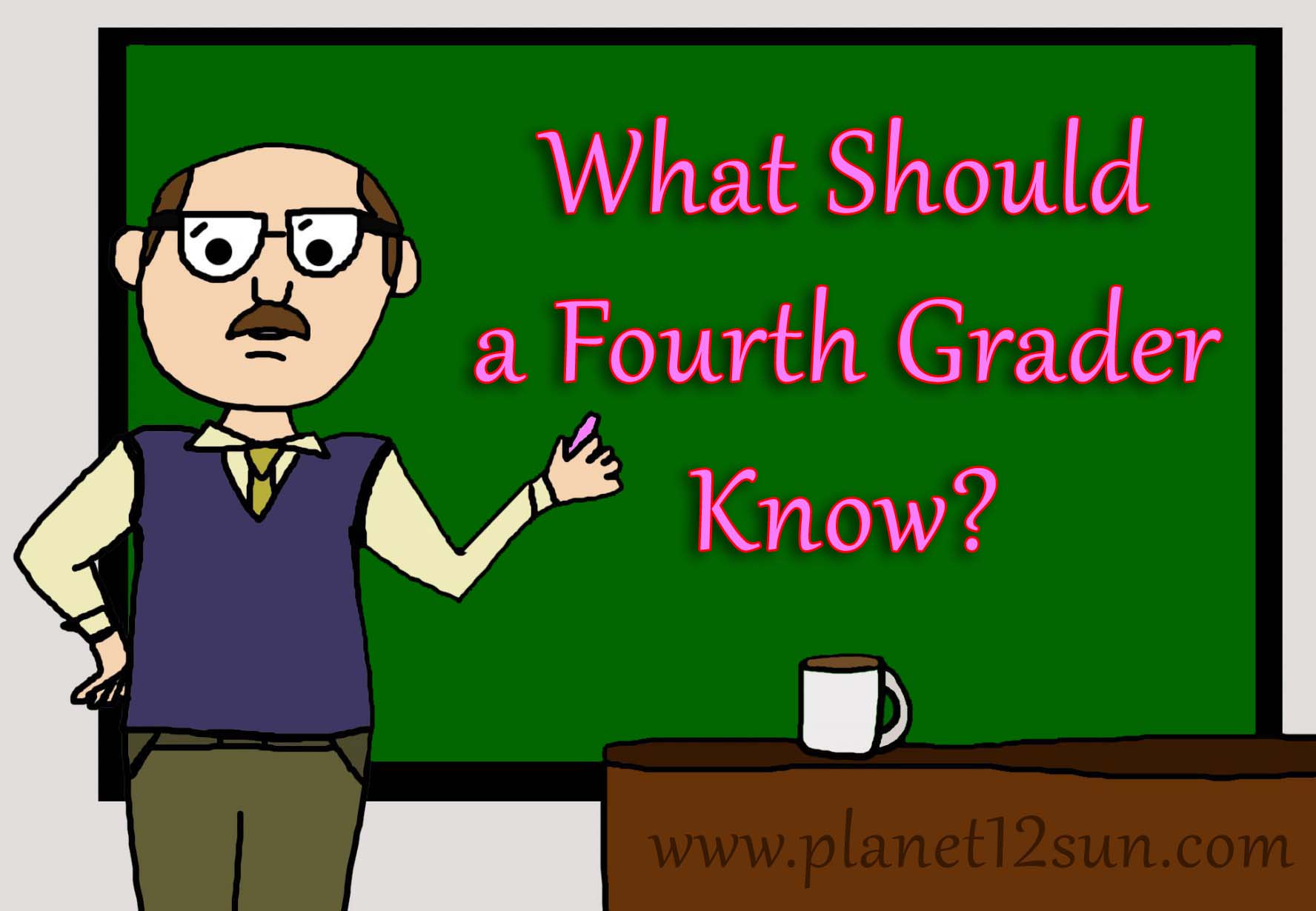Fourth grade: What your child should know
No two kids are alike. It's OK for children to be at different levels. A child's unique differences should be welcomed and accepted. Also keep in mind, that a child's level of readiness in August will be very different from what it is in December, for example. It does, however, help to have a rough idea of which academic and social skills your child should acquire at his or her grade level.
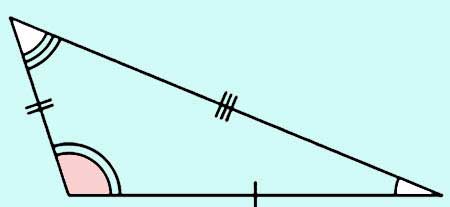
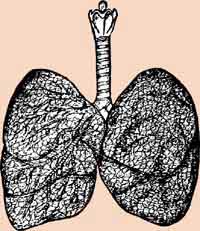

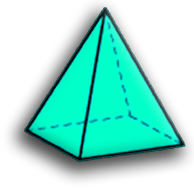
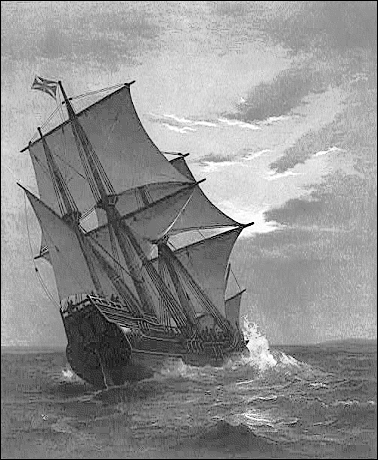
By the end of the year, you can expect your child to:
Math & Geometry & Measurement
- Do mental addition and subtraction
- Add four-digit numbers, subtract with regrouping
- Memorize the multiplication table
- Do mental division of simple numbers
- Start Dividing large numbers
- Recognize 2D and 3D shapes
- Determine a shape’s perimeter
- Tell time to the hour and half hour
- Know time to minute and elapsed time in minutes, add and subtract time
- Read thermometers and use measuring tools like rulers
- Understand calendar
- Understand money- coins and bills, count, add and subtract money
- Estimate and measure length, weight, and capacity
- Use U.S. customary and metric units to measure objects – length, weight, volume, and temperature
- Understand symmetry
- Organize data with tally marks, pictographs, and bar charts (e.g., collecting and charting the birthdays of all the boys and girls in class)
- Read and write large numbers through the hundred thousands
- Recognize, identify, and create a quadrilateral, rhombus, square, triangle, trapezoid, hexagon, and parallelogram. Understand lines and rays, angles, lines, polygons and the area of rectangle
- Work with patterns and sequences
- Round and compare large numbers
- Solve word problems using addition, subtraction, multiplication, and division; solve multi-step word problems
- Explain in words how a math problem was solved
- Know the place value for each digit
- Understand negative numbers
- Understand prime and composite numbers
- Find common multiples
- Work with fractions and decimals. (Understand improper fractions and mixed numbers. Add, subtract and reduce fractions. Read, write, round decimals; place decimals on a number line. Convert decimals to fractions and fractions to decimals.)
Social Studies
Social studies curriculum in fourth grade includes history and geography. Fourth graders will usually study: world geography including maps, hemispheres, coordinates, mountains and scale. History, including your home state, the American Revolution, the Constitution, the Bill of Rights and the early presidents. Examples of topics are below.
- Locate the USA, continents, and oceans on a large map or globe
- Identify the countries, major rivers, and mountain ranges in North America
- Know about the five regions of the United States
- Compare different parts of the United States (e.g., contrasting year-round climate of the various regions)
- Know cardinal directions and map key
- Identify hemispheres, poles, and the equator on a globe
- Study topics relating to American history, such as Native Americans, the journey of the Mayflower, pilgrims, and the first settlers
- Know significant individuals in United States history
- Know people and events honored in commemorative holidays
- Recognize American symbols (the eagle, Liberty Bell, the flag, etc.)
- Start to identify states and their capitals on a map of the United States
- Create a personal timeline
- Understand the concept of history as real stories of other times (create charts and timelines)
- Have a basic awareness of other cultures and cultural traditions
- Learn about the history of their own communities
- Learn about the basic workings of democracies and other types of governments
- Identify the difference between local, state, and national government, and identify key leaders for each (mayor, governor, president, etc.)
- Know key events of her state’s history
- Name the political leaders of her city and state
- Tell you about the Native American tribes that lived in her state
- Discuss what the U.S. Constitution is and why it is important
- Discuss natural resources and how they are used to produce goods
Science
Fourth-grade science curriculum depends on your school district but generally, fourth graders study electricity, geology, such as earthquakes and erosion, and the systems of the human body. Examples of topics are below.
- Know the colors of the visible light spectrum
- Compare the human skeleton to animal skeletal systems
- Observe and record the behavior of birds and mammals (e.g., caring for young, obtaining food, surviving winter)
- Identify and explain basic function of important systems of the human body (digestive, circulatory, and respiratory)
- Understand food and the benefits of vitamins, minerals and exercise
- Explore the life cycle of living things, such as frogs, butterflies, mammals
- Use tools such as a magnifying glass, ruler, and balancing scale
- Distinguish between living and non-living things
- Compare and describe the structural characteristics of plants and animals
- Recognize how people impact the Earth, conservation, recycling, reducing pollution
- Classify materials as solid, liquid or gases
- Measure and record weather conditions
- Name the planets in the solar system
- Learn about galaxies, moons, stars, and meteors of outer space
- Learn about the role of the Earth's orbit in seasonal change
- Recognize the basic forms of energy
- Know that the Sun supplies heat and light energy to the Earth
- Weather prediction using different types of clouds (i.e., cumulus, cirrus, stratus)
- Explain how magnets interact with all things made of iron
- Describe the processes of evaporation, condensation, and precipitation as they relate to the water cycle
- Identify and use the tools of a meteorologist (e.g., measure rainfall using rain gauge, measure air pressure using barometer, measure temperature using a thermometer)
- Identify the processes of physical weathering that break down rocks at Earth's surface
- Identify rocks and minerals
- Classify rocks as metamorphic, sedimentary or igneous
- Understand the use of fossils and changes in the surface of the earth as evidence of the history of Earth and its changing life forms
Reading & Writing & Comprehension
- Sort words in alphabetical order
- Address an envelope
- Write in cursive
- Write in a variety of genres including a thank-you note, a friendly letter, a business letter, an invitation letters, fiction stories and research reports
- Write stories with a beginning, middle and end
- Use timelines to show the sequence of historical events
- Identify story elements such as plot, settings, and characters
- Identify the main idea of a story
- Write a summary of a story
- Understand the different genres of fiction
- Understand parts of speech
- Use basic irregular verbs correctly
- Use capital letters correctly
- Punctuate sentences using periods, question marks, and exclamation points
- Punctuate dialog with quotation marks
- Edit his or her own writing for spelling and punctuation
- Recognize word patterns (prefixes and suffixes)
- Understand and use first-person and third-person point of view
- Use reference books such as the dictionary, encyclopedias and thesaurus
- Be able to do basic research from a non-fiction book
- Interpret information from charts, images, videos, timelines and diagrams
- Synthesize information from two texts
- Summarize information
- Use computers to find information
- Try to decipher the meaning of unfamiliar words
- Read and write large numbers through the hundred thousands
- Write in paragraphs using transition words
- Correctly use apostrophes
- Identify the meaning of common antonyms, synonyms, and homonyms
- Proficiently read at grade level four in both fiction and nonfiction texts
